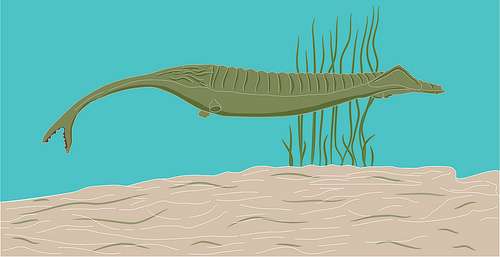High school students use nation's top X-rays to study Illinois fossils

High school students learned to see fossils in a new light in an educational program that allowed students to work with both Illinois fossils and cutting-edge X-ray technology to gain experience in conducting science research.
This project, conducted as part of the Exemplary Student Research Program (ESRP) at the U.S. Department of Energy's Argonne National Laboratory, seemed uniquely suited to the students of Downers Grove South High School. Not only is Argonne just a few miles away from their school, but the fossils they were studying were obtained from a famous Illinois fossil bed containing extremely well-preserved organisms.
Antonio Lanzirotti and Matt Newville, senior research associates in the Physical Sciences Division at the University of Chicago, coordinated the research and taught the students how to use the X-ray technology. The duo help oversee work at the GeoSoilEnvironCars beamline at the Advanced Photon Source (APS) at Argonne.
The X-ray microprobe at the APS's GeoSoilEvniroCars beamline that the students used can measure elements in natural materials at extremely low concentrations, down to the parts-per-billion level. The students sought to use the X-rays to visualize fossilized biological soft tissue that wasn't visible with the naked eye. They did this by looking for and measuring trace amounts of elements such as copper that may have bound to the tissue during the fossilization process.
The students' project was inspired by similar research published in the journal Science that used copper distribution in fossilized bird feathers to infer the original coloring of the feathers. That research showed that certain trace metals, such as copper, may have been attracted to the pigment melanin in soft tissue and bound to it.
A mere 40 miles away from Argonne, the Mazon Creek fossil beds are world-renowned in paleontology for their rich deposits of exquisitely preserved soft-bodied organisms, such as fish, jellyfish and marine worms. Mazon Creek is also home to the Illinois state fossil, Tullimonstrum gregarium, better known as the Tully Monster. This paddle-shaped organism, unique to Mazon Creek, roved the warm, shallow seas that covered Illinois 300 million years ago.
The students obtained a fossil of a segmented marine worm that had swum in these same seas. X-ray scans revealed trace amounts of iron and copper, as they had predicted they would find. Still the students were surprised to also find trace amounts of arsenic that seemed to outline the form of the preserved fossilized animal.
This unexpected discovery prompted the students to adjust their research questions and make new hypotheses, testing their mettle as scientists. Through research, they discovered that the unique combination of minerals at Mazon Creek tends to strongly attract the trace amounts of arsenic that occur naturally in the environment. They presented their results at Argonne in May, at an annual meeting of national and international scientists who conduct research with X-rays at the APS.
Theresa Quain, a teacher at Downers Grove South High School, believes this early research experience is valuable for the development of budding scientists.
"It allowed the students to see that science is much more open-ended than what it's like in school," she said. "We didn't find at all what we were expecting to find. This process was eye-opening."
The ESRP high school research opportunity is in its second year at the laboratory, and the number of Illinois schools participating has grown from three to seven. School districts have to fund transportation for the students and provide a teacher to serve as a project mentor. Use of the APS beamline is free of charge, and the scientists donate their time. The participating high schools hold internal competitions to select students to fill the limited number of research slots.
Journal information: Science
Provided by Argonne National Laboratory

















